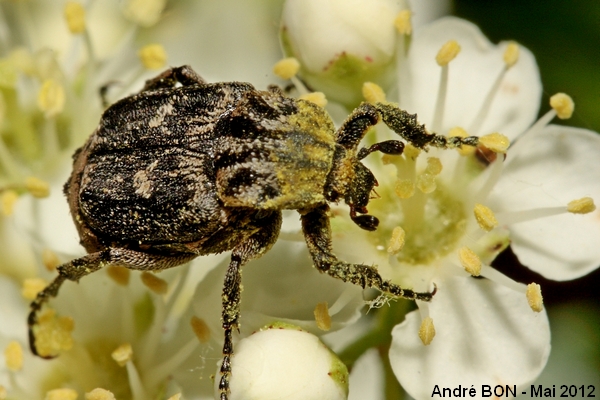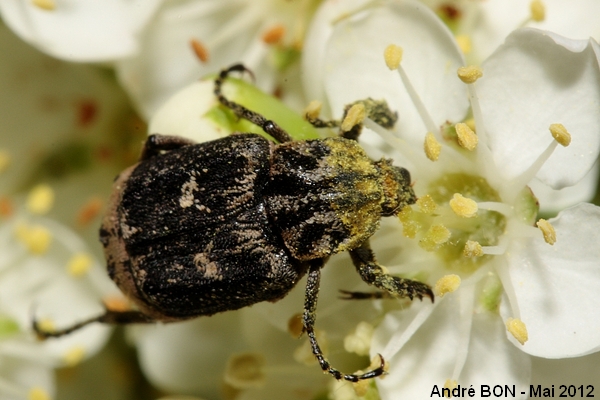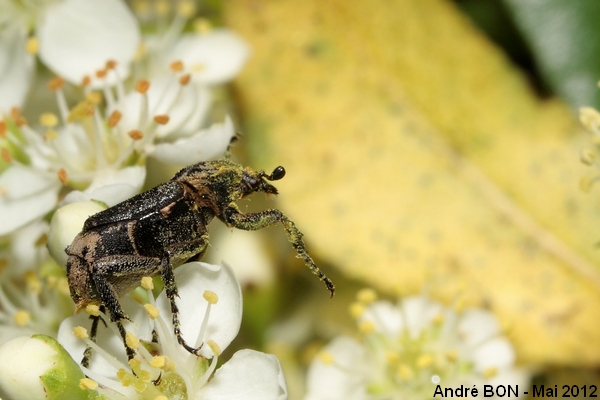



| Valgus hemipterus (Linnaeus, 1758) |




|
|
Scientific name: Valgus hemipterus (Linnaeus, 1758) Common name: French name: Valgue hémiptère Order: Coleoptera Family: Scarabaeidae Wingspan : 6-10 mm. Biotope: Adults, especially males, are observed on flowers. Females are often observed on the ground close to old tree stumps. Larvae grow in dead wood. Geographic area: Europe, missing in the south-western quarter of the Iberian Peninsula, in Great Britain and in most parts of Scandinavia. It is observed as far as Uzbekistan eastwards and in Northern Africa too. It has been introduced to some places of North America. Observation period : April to June. |
Valgus hemipterus is a general black colour with small beige scales irregularly scattered and mainly present on males. The elytra do not totally cover the abdomen. The antennae are rather short with an ovoid clubbed tip of three lamellae. The hind hips are very distant one from the other (under side view required). The first article of the hind tarsi is longer than the second and third ones together. Females, which are much rarer than males, bear a toothed telson at the tip of the abdomen. It is only used to drill wood, not to lay eggs. |
| [To know more about the Valgus hemipterus] [Next picture] [Top] |

|
I have observed this Valgus hemipterus on the flowers of Pyracanthas in my garden. |
| [To know more about the Valgus hemipterus] [Next picture] [Previous picture] [Top] |

|
This upper side view shows the elytra not totally covering the abdomen. |
| [To know more about the Valgus hemipterus] [Next picture] [Previous picture] [Top] |

|
On this side view you can see the clubbed antennae and the very long first article of the hind tarsi. |
| [To know more about the Valgus hemipterus] [Previous picture] [Top] |

|
Here's another male. I hope to photograph a female one day. |